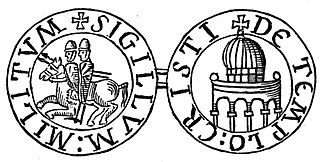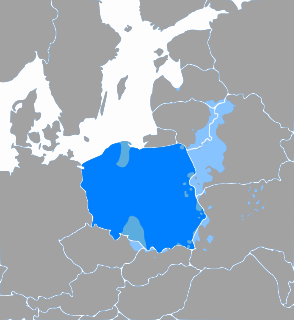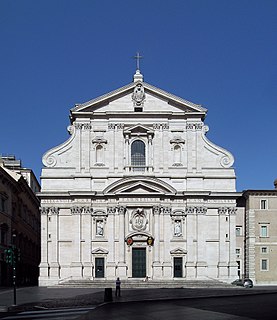| Owiesno | |
|---|---|
| Village | |
 | |
| Coordinates: 50°40′N16°42′E / 50.667°N 16.700°E Coordinates: 50°40′N16°42′E / 50.667°N 16.700°E | |
| Country | |
| Voivodeship | Lower Silesian |
| County | Dzierżoniów |
| Gmina | Dzierżoniów |
| Elevation | 400 m (1,300 ft) |
| Population | 580 |
Owiesno [ɔˈvjɛsnɔ] (German : Habendorf) is a village in the administrative district of Gmina Dzierżoniów, within Dzierżoniów County, Lower Silesian Voivodeship, in south-western Poland. [1] It lies approximately 12 km (7 mi) south-east of Dzierżoniów, and 57 km (35 mi) south-west of the regional capital Wrocław. The village has a population of 580.

German is a West Germanic language that is mainly spoken in Central Europe. It is the most widely spoken and official or co-official language in Germany, Austria, Switzerland, South Tyrol (Italy), the German-speaking Community of Belgium, and Liechtenstein. It is also one of the three official languages of Luxembourg and a co-official language in the Opole Voivodeship in Poland. The languages which are most similar to German are the other members of the West Germanic language branch: Afrikaans, Dutch, English, the Frisian languages, Low German/Low Saxon, Luxembourgish, and Yiddish. There are also strong similarities in vocabulary with Danish, Norwegian and Swedish, although those belong to the North Germanic group. German is the second most widely spoken Germanic language, after English.
Gmina Dzierżoniów is a rural gmina in Dzierżoniów County, Lower Silesian Voivodeship, in south-western Poland. Its seat is the town of Dzierżoniów, although the town is not part of the territory of the gmina.

Dzierżoniów County is a unit of territorial administration and local government (powiat) in Lower Silesian Voivodeship, south-western Poland. It came into being on January 1, 1999, as a result of the Polish local government reforms passed in 1998. Its administrative seat is the town of Dzierżoniów, and it also contains four other towns: Bielawa, Niemcza, Pieszyce and Piława Górna. The county covers an area of 478.3 square kilometres (184.7 sq mi).
Owiesno was first mentioned as Ovesonovo in a 1260 deed and as Haverdorph in 1292. In 1945 it fell to Poland.
Upon the foundations of an old Knights Templar castle Przecław of Pogorzeli (Pogarell), the Bishop of Wrocław and chancellor of Emperor Charles IV, had a palace erected in the 14th century. It was rebuilt several times and decayed after 1945 so only ruins remain.

The Poor Fellow-Soldiers of Christ and of the Temple of Solomon, also known as the Order of Solomon's Temple, the Knights Templar or simply the Templars, were a Catholic military order recognised in 1139 by the papal bull Omne datum optimum. The order was founded in 1119 and was active until 1312 when it was perpetually suppressed by Pope Clement V by the bull Vox in excelso.

The Archdiocese of Wrocław is a Latin Rite archdiocese of the Catholic Church named after its capital Wrocław in Poland. From its founding as a bishopric in 1000 until 1821, it was under the Archbishopric of Gniezno in Greater Poland. From 1821 to 1930 it was subjected directly to the Apostolic See. Between 1821 and 1972 it was officially known as (Arch)Diocese of Breslau.
Chancellor is a title of various official positions in the governments of many nations. The original chancellors were the cancellarii of Roman courts of justice—ushers, who sat at the cancelli or lattice work screens of a basilica or law court, which separated the judge and counsel from the audience. A chancellor's office is called a chancellery or chancery. The word is now used in the titles of many various officers in all kinds of settings. Nowadays the term is most often used to describe:
The Holy Trinity church (Polish : Kościół Św. Trójcy) was erected about 1583 and received a Boroque equipment including an altar with a Trinity painting about 1730.

The Christian doctrine of the Trinity holds that God is one God, but three coeternal consubstantial persons or hypostases—the Father, the Son, and the Holy Spirit—as "one God in three Divine Persons". The three Persons are distinct, yet are one "substance, essence or nature" (homoousios). In this context, a "nature" is what one is, whereas a "person" is who one is. Sometimes differing views are referred to as nontrinitarian. Trinitarianism contrasts with positions such as Binitarianism and Monarchianism, of which Modalistic Monarchianism and Unitarianism are subsets.

Polish is a West Slavic language of the Lechitic group. It is spoken primarily in Poland and serves as the native language of the Poles. In addition to being an official language of Poland, it is also used by Polish minorities in other countries. There are over 50 million Polish language speakers around the world and it is one of the official languages of the European Union.

Baroque architecture is the building style of the Baroque era, begun in late 16th-century Italy, that took the Roman vocabulary of Renaissance architecture and used it in a new rhetorical and theatrical fashion, often to express the triumph of the Catholic Church. It was characterized by new explorations of form, light and shadow, and dramatic intensity. Common features of Baroque architecture included gigantism of proportions; a large open central space where everyone could see the altar; twisting columns, theatrical effects, including light coming from a cupola above; dramatic interior effects created with bronze and gilding; clusters of sculpted angels and other figures high overhead; and an extensive use of trompe-l'oeil, also called "quadratura," with painted architectural details and figures on the walls and ceiling, to increase the dramatic and theatrical effect.






